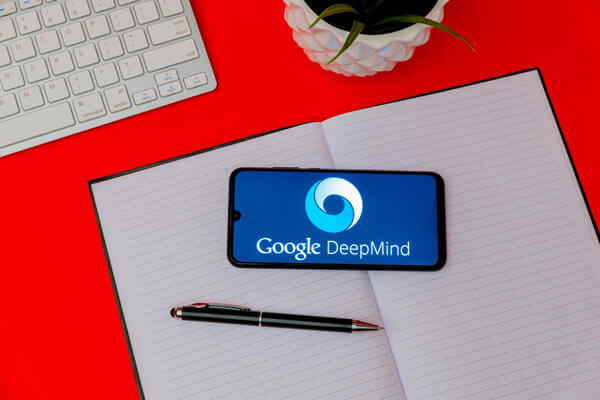What is Google AI

“Google AI” refers to the artificial intelligence (AI) research and development efforts undertaken by Google. Google has been a major player in the field of AI, leveraging machine learning techniques and advanced algorithms to improve various products and services. Google AI encompasses a wide range of applications, including natural language processing, computer vision, speech recognition, and more.
In this article, we will be exploring some of the key features for Google AI. Whether you are a general audience, business owner or an individual interested in Artificial Intelligence, this comprehensive guide will provide you with valuable insights. Let’s dive in and discover the basic benefits of Google AI.
According to Google “We believe that AI is a foundational and transformational technology that will provide compelling and helpful benefits to people and society through its capacity to assist, complement, empower, and inspire people in almost every field of human endeavor.“ (Visit Google AI website)
Google AI Projects
Some notable Google AI projects include:
Google Ads: Google uses artificial intelligence (AI) and machine learning extensively in its advertising platform.
Google Search: Google uses AI algorithms to improve search results and provide more relevant information to users.
Google Translate: AI plays a crucial role in language translation, helping to improve the accuracy and fluency of translations.
Google Photos: The photo organization and categorization features in Google Photos are powered by machine learning algorithms.
Google Assistant: Google’s virtual assistant utilizes AI to understand and respond to user queries in natural language.
DeepMind: While technically a subsidiary of Alphabet Inc. (Google’s parent company), DeepMind is a prominent AI research lab acquired by Google. DeepMind has worked on various AI projects, including AlphaGo, a program that achieved superhuman performance in the complex board game Go.
TensorFlow: Google has developed an open-source machine learning framework called TensorFlow, which is widely used in the AI and machine learning community.
How is AI used with Google Ads?

Smart Bidding: Google Ads uses machine learning algorithms for automated bidding strategies. Smart Bidding optimizes bids for conversions or conversion value in real-time, taking into account various factors such as user device, location, time of day, and more.
Responsive Search Ads: Advertisers can create ads with multiple headlines and descriptions, and Google Ads uses machine learning to test different combinations and display the most effective ones based on performance.
Targeting: Google Ads leverages AI for audience targeting. This includes remarketing lists, in-market audiences, affinity audiences, and similar audiences. Machine learning helps identify users who are more likely to engage with specific ads.
Dynamic Search Ads: Advertisers can create ads dynamically based on the content of their website. Google’s machine learning algorithms analyze the content and generate relevant ad headlines and landing pages.
Ad Suggestions: Google Ads can automatically create ad suggestions using machine learning. Advertisers can review and apply these suggestions to improve ad performance.
Keyword Matching: Google Ads uses machine learning to improve the relevance of ads by automatically expanding and matching keywords to user queries.
Conversion Tracking: Machine learning helps attribute conversions to the most relevant ads and keywords, providing insights into the effectiveness of different elements of a campaign.
Ad Rank and Quality Score: Google Ads uses machine learning to determine ad rank in the ad auction, considering factors like expected click-through rate, ad relevance, and landing page experience.
How does Google use AI with Search?
Google utilizes artificial intelligence (AI) in various ways to enhance the search experience and provide more relevant results to users. Here are some key ways in which Google AI is used with search:
Ranking Algorithm: Google’s search algorithm, including RankBrain, uses machine learning to understand the intent behind search queries and to rank search results accordingly. It helps Google better interpret ambiguous queries and deliver more relevant results based on the user’s search history and behavior.
Natural Language Processing (NLP): Google employs NLP techniques to better understand the natural language used in search queries. This helps the search engine comprehend user intent, context, and the meaning behind the words, allowing it to deliver more accurate results.
BERT (Bidirectional Encoder Representations from Transformers): BERT is a deep learning algorithm used by Google to understand the context of words in a sentence. It enables Google to provide more accurate answers to complex queries and improves the understanding of conversational language.
Featured Snippets: Google uses AI to generate featured snippets, which are concise summaries of information extracted from web pages. These snippets appear at the top of search results and aim to provide quick and relevant answers to users’ queries.
Personalization: Google employs machine learning to personalize search results based on a user’s search history, location, and other factors. Personalized search results aim to better match individual user preferences and interests.
Voice Search: AI is integrated into voice search functionalities, allowing users to perform searches using natural language via voice commands. Google’s AI algorithms work to understand and respond to spoken queries effectively.
Image and Video Search: Google uses AI to improve image and video search capabilities. This includes image recognition and analysis to understand the content of images and provide relevant results.
Search Autocomplete and Suggestions: Google’s AI algorithms analyze user search patterns to generate autocomplete suggestions in the search bar. This feature helps users formulate queries more efficiently.
Query Understanding and Expansion: Google’s AI helps in understanding the context of a search query and expanding it to include related terms, improving the chances of delivering more comprehensive and relevant results.
Local Search: AI is used to enhance local search results by considering factors like location data, user preferences, and business information to provide more relevant and personalized local results.
It’s important to note that Google’s AI efforts are not limited to specific applications but span across various products and services, contributing to advancements in the broader field of artificial intelligence.
Google continues to be at the forefront of AI research and development.
How is Google AI used with Google Translate?
Google AI is utilized in various ways within Google Translate to improve the accuracy and efficiency of language translation. Here are some key ways in which Google AI is incorporated into Google Translate:
Neural Machine Translation (NMT): Google has transitioned from traditional statistical machine translation to neural machine translation. NMT is a type of machine learning that uses artificial neural networks to improve translation quality. Google Translate leverages NMT to understand and generate more contextually accurate translations.
AutoML (Auto Machine Learning): Google employs AutoML technologies to automate the process of developing machine learning models. In the context of Google Translate, AutoML may be used to fine-tune and optimize translation models for specific language pairs, making the system more effective over time.
Continuous Learning: Google Translate benefits from continuous learning, meaning that the system learns from new data and user feedback. As more people use Google Translate and provide corrections or alternative translations, the system can adapt and improve its accuracy over time.
Multilingual Neural Models: Google Translate uses multilingual neural models that can handle multiple languages simultaneously. This allows for more efficient use of computational resources and enables the system to learn from a broader range of language pairs, contributing to overall translation quality.
Language Embeddings: Google AI employs advanced techniques like word embeddings and sentence embeddings to represent the meaning of words and phrases in a multidimensional space. This enables the system to capture semantic relationships between words and better understand the nuances of language.
Context Awareness: Google Translate aims to understand the context of a sentence or phrase, taking into account the surrounding words to generate more contextually relevant translations. This is especially important for languages with different word orders and structures.
Speech Recognition and Translation: Google AI is also used in the speech recognition component of Google Translate. This allows users to speak into their devices, and the system can recognize and translate their spoken words in real-time.
It’s important to note that the specific technologies and algorithms employed by Google Translate may evolve over time as Google continues to invest in research and development in the field of natural language processing and machine translation.
How does Google employ AI with Photos?
Google employs artificial intelligence (AI) in various ways to enhance the functionality of Google Photos, a cloud-based photo and video storage service. Here are some key ways in which Google uses AI with Photos:
Image Recognition and Classification: Google Photos uses AI algorithms for image recognition to automatically identify objects, people, and scenes in photos. This allows for easier categorization and search within the photo library.
Face Recognition: AI-powered face recognition technology helps Google Photos identify and group photos of the same person. Users can search for specific individuals, and the system can automatically suggest sharing photos with recognized contacts.
Automatic Photo Organization: Google Photos automatically organizes photos based on various factors, such as date, location, and content. This organization simplifies the browsing and retrieval of photos for users.
Content Suggestions: AI algorithms analyze the content of photos to provide intelligent suggestions, such as creating albums, collages, or animations. For example, Google Photos can suggest creating a “Best of the Year” album or an animated GIF from a series of related photos.
Search by Objects and Places: Users can search for photos using natural language queries like “beach,” “dog,” or specific locations. The AI algorithms analyze the content of photos to enable accurate object and place recognition.
Automatic Enhancements: Google Photos can automatically enhance the quality of photos using AI-driven features. This may include adjustments to brightness, contrast, and color balance.
Memories and Rediscover Features: AI is used to identify significant events and moments in a user’s photo library and present them as Memories or Rediscover features. This allows users to revisit and share important memories easily.
Lens Suggestions: Google Lens integration in Google Photos uses AI for visual analysis. It can recognize text, landmarks, objects, and more within photos, providing additional information and interactive features.
Collaborative Albums: AI assists in suggesting collaborative albums by identifying shared content among friends or family members. Users receive prompts to create shared albums with people who appear frequently in their photos.
Automatic Backup and Sync: AI-driven algorithms manage the automatic backup and synchronization of photos across devices, ensuring a seamless and consistent experience for users.
Google’s use of AI in Google Photos continues to evolve, and the platform regularly receives updates with new features and improvements. These AI-powered functionalities aim to provide users with a more intelligent, organized, and personalized experience when managing and interacting with their photo collections.
How does Google Assistant use AI
Google Assistant utilizes a variety of artificial intelligence (AI) technologies to understand and respond to user queries, providing a natural language interface for interacting with devices and accessing information. Here are some key ways in which Google AI is used for Google Assistant:
Natural Language Processing (NLP): Google Assistant leverages advanced natural language processing techniques to understand the intent and context of user queries. This involves parsing and analyzing the structure of sentences to extract meaning and determine the user’s needs.
Machine Learning Models: Google Assistant employs machine learning models, including deep learning algorithms, to continually improve its understanding of user inputs. These models learn from large datasets of user interactions, allowing the system to adapt and provide more accurate and contextually relevant responses over time.
Speech Recognition: Google Assistant supports voice interactions, and AI is used for speech recognition to convert spoken words into text. Deep learning models, such as recurrent neural networks (RNNs) and convolutional neural networks (CNNs), play a crucial role in accurately transcribing and understanding spoken language.
Personalization: Google Assistant uses AI to personalize user experiences based on individual preferences and past interactions. By learning from user behavior and preferences, the system can provide more tailored responses and suggestions.
Context Awareness: Google Assistant aims to maintain context throughout a conversation. AI algorithms help the system remember previous interactions, allowing users to have more natural and coherent conversations with the assistant.
Knowledge Graph Integration: Google Assistant is integrated with Google’s Knowledge Graph, a vast database of information about people, places, and things. AI algorithms help link and retrieve relevant information from the Knowledge Graph to answer user queries accurately.
Task Automation: Google Assistant can perform various tasks on behalf of the user, such as setting reminders, sending messages, or controlling smart home devices. AI is used to understand user requests and execute tasks through integration with other applications and services.
Continuous Learning: Similar to other Google AI applications, Google Assistant benefits from continuous learning. It learns from user interactions and feedback, allowing the system to adapt and improve its performance over time.
Multimodal Capabilities: Google Assistant can handle both voice and text inputs, and it can also process visual information. For example, it can analyze images or recognize objects through the device’s camera, expanding its capabilities beyond just voice-based interactions.
Google Assistant’s functionality is a result of the integration of various AI technologies, and as AI research advances, it is likely that Google will continue to enhance and expand the capabilities of Google Assistant.
What is DeepMind?
DeepMind is a British artificial intelligence (AI) research lab that was founded in September 2010 by Demis Hassabis, Shane Legg, and Mustafa Suleyman. In 2014, Google acquired DeepMind for a reported $500 million, and since then, it has operated as a subsidiary of Alphabet Inc., Google’s parent company. Here are some key points about DeepMind and its relationship with Google:
DeepMind’s Background:
Founding Principles: DeepMind was established with the goal of conducting advanced research in artificial intelligence to solve complex problems and advance the field.
Leadership: The founders, Demis Hassabis, Shane Legg, and Mustafa Suleyman, brought a combination of expertise in machine learning, neuroscience, and AI to the organization.
Key Achievements and Projects:
AlphaGo: One of DeepMind’s most notable achievements was the development of AlphaGo, an AI program that beat the world champion Go player in 2016. This marked a significant milestone in AI, as Go is a highly complex game that was considered challenging for computers to master.
AlphaGo Zero: DeepMind later developed AlphaGo Zero, a more advanced version that learned to play Go entirely through self-play, with no human-provided data. It demonstrated the capability of AI systems to learn and excel in complex tasks from scratch.
Healthcare Initiatives: DeepMind has also been involved in healthcare research, exploring the application of AI to analyze medical data. For example, they worked on projects related to the analysis of retinal scans and predicting patient deterioration.
Relationship with Google:
Acquisition: Google’s acquisition of DeepMind in 2014 was a strategic move to strengthen its capabilities in artificial intelligence. The acquisition reflected Google’s interest in advancing AI research and applications.
Operational Independence: DeepMind has operated with a significant degree of independence within Alphabet. While it collaborates with other Alphabet subsidiaries, it retains its own leadership and organizational structure.
Ethical Considerations: The integration of DeepMind into Google raised ethical concerns regarding the use of AI, particularly in healthcare. DeepMind has made efforts to address these concerns, emphasizing the importance of responsible AI development and data privacy.
Resource Sharing: DeepMind has benefited from access to Google’s vast computing resources, which is crucial for training large-scale machine learning models. This collaboration has allowed DeepMind to undertake ambitious projects and advance the state of the art in AI.
FUTURE DIRECTION
DeepMind continues to focus on cutting-edge AI research, exploring applications in healthcare, gaming, and other domains. The collaboration with Google and the broader Alphabet ecosystem provides DeepMind with resources and opportunities to pursue ambitious projects and contribute to the advancement of AI technologies.
NetQwik is a web design and SEO company headquartered in Ashburn, Virginia. We are a one stop web solutions company and operate out of our offices in Ashburn, Fairfax, Richmond, Spotsylvania, Norfolk, Northern Virginia.
We have been rated as one of the best SEO agencies in Northern Virginia. Our services include web design, e-Commerce websites, local SEO, search engine optimization, social media marketing, content marketing, digital marketing, domain names and hosting, we provide it all.
If you are looking for a Northern Virginia SEO and web design company to launch your next project, give us call at 800-657-5432 or fill out our contact form for a free consultation.





